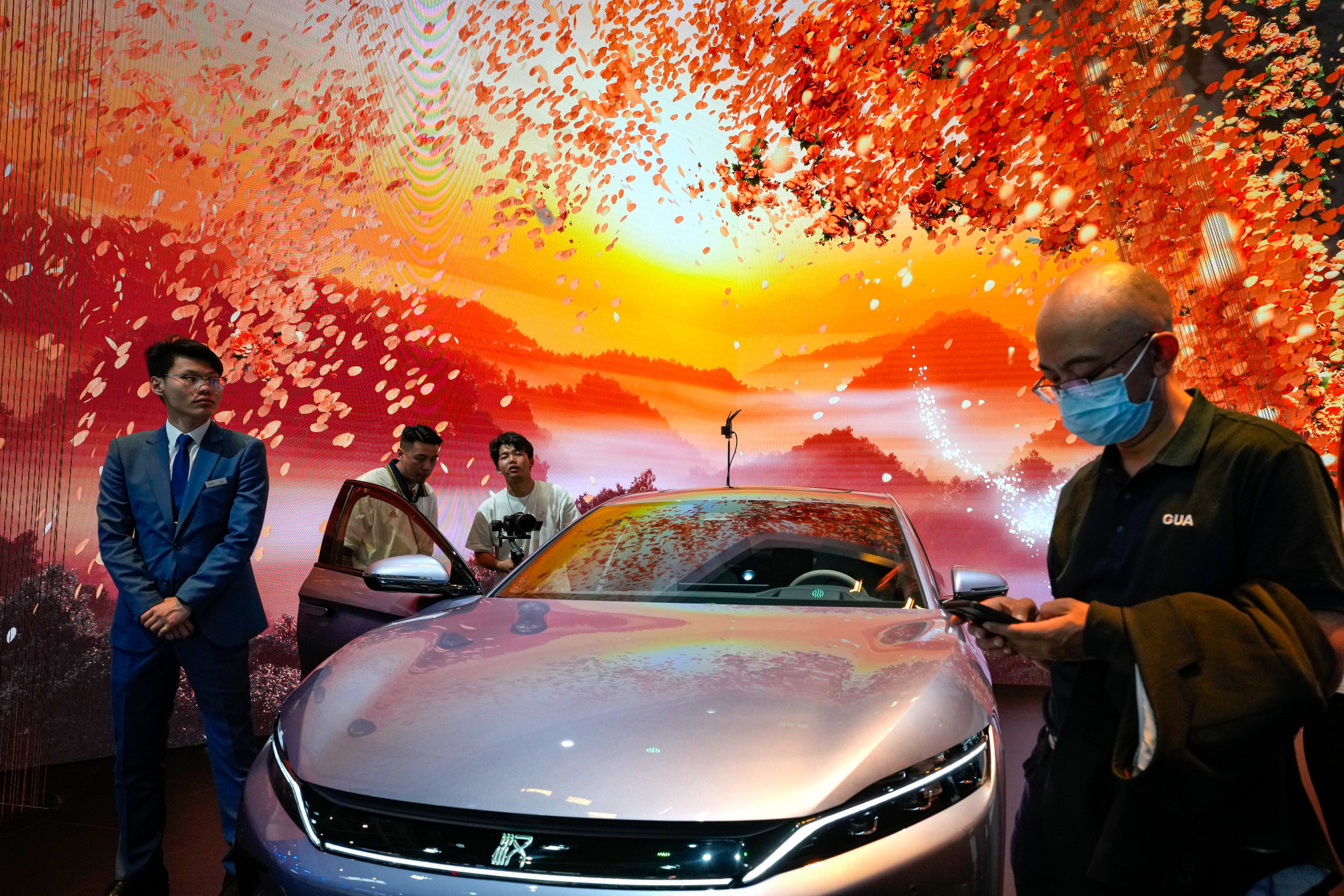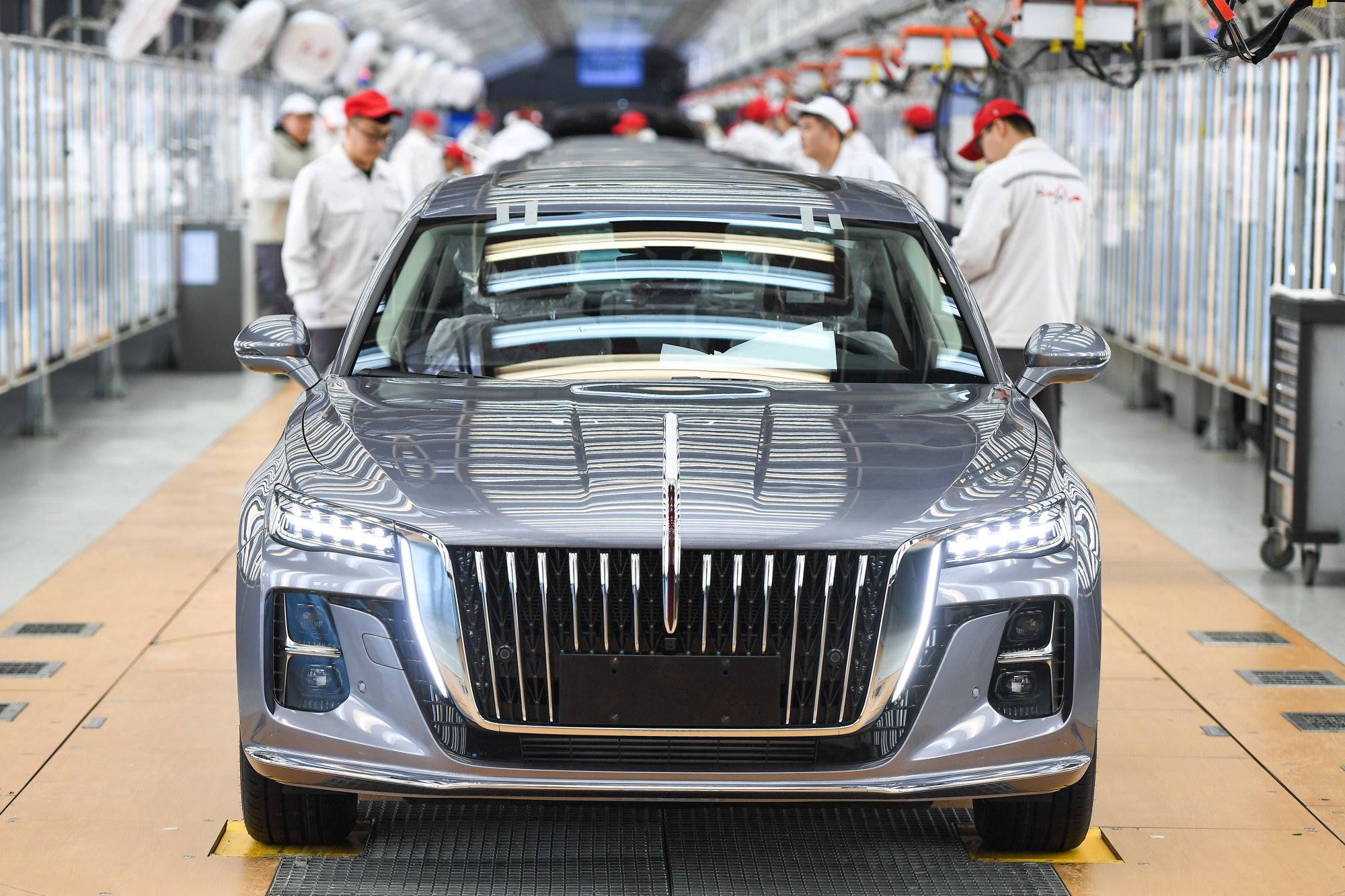A peek at EVs’ future at Beijing show as oil-guzzlers stay on sidelines
The global automotive industry increasingly treats China as the “university for studying the latest technology and trends,” as well as being a “fitness studio of sorts to hone their competitiveness”, said UBS analyst Paul Gong.
The Post discerned the most promising trends from some of the models on display:

Talk of the show
Some carmakers are resorting to efficiency to improve their margins. Volkswagen, marking its 40th anniversary of making cars in China, said it can cut costs by 40 per cent if it shortens the development time of its EVs by 30 per cent, according to the carmaker’s China chief executive Ralf Brandstatter.

Most expensive models
GAC, the Chinese partner of Honda Motor, displayed the 1.686 million yuan Aion Hyper SSR electric sports car. The two-door coupe, featuring scissor doors, has a range of up to 506km.
The Shenzhen-based carmaker, which counts Warren Buffett’s Berkshire Hathaway as a shareholder, is now poised to begin delivering the Yangwang U9 supercar in the middle of the year. The electric coupe, which can accelerate from standstill to 100km/hour in 2.36 seconds, features a proprietary individual wheel drive system that enables it to redistribute torque among its wheels and keep running on three tyres at speed. Its sticker price is 1.68 million yuan.

The Hongqi N701 limousine belongs in the category of “unavailable at any price”. The brand, which means Red Flag in Chinese, was first launched in 1958 by First Automotive Works (FAW) based on a 1955 Chrysler. It was the first locally developed brand for the newly founded People’s Republic.
Chinese leaders since Mao Zedong have used the Hongqi as their presidential carriage. The armour-plated N701 – its specifications are a closely guarded secret – is the counterpart of “the Beast,” as the American president’s armoured Cadillac is called. It was President Xi Jinping’s ride during his visits to Hong Kong, the United States and most recently to see Emmanuel Macron at the Elysee Palace.
Hongqi does have several models available to the public. The closest to the N701 is the H9, a luxury limousine that comes in officious black, or a violet-and-gold optional colour scheme. It runs on either a two-litre or three-litre supercharged petrol engine, priced at between 309,800 yuan and 539,800 yuan.

Biggest buzz: Xiaomi’s SU7
The buzz around the SU7 helped Xiaomi lock in about 90,000 orders since its launch, putting it in good position to meet its 100,000-unit target in 2024 and claim one of the automotive industry’s most successful debuts. Deliveries began on April 3, with a waiting time of up to 32 weeks for the standard version.
Biggest show stealer

Most innovative use of space
Electric vehicles offer more cockpit and storage space because they eschew the bulky internal combustion engine. Chinese EV makers have begun to experiment and offer creative uses of space unseen in petrol-guzzling models, offering glimpses of what the internet-connected, spacious vehicle of the future could look like.


Fast charging batteries
The most basic EV models these days boast that range. Even the Binguo compact EV by SAIC-GM-Wuling, which claims to be the world’s cheapest EV at 59,800 yuan, can travel 203km on a charge.
A driving range of 500km to 600km is the minimum to help drivers overcome their range anxiety, while several models claim to be able to drive 1,000km (621 miles) with one charge, the driving distance from Beijing to Nanjing.
Contemporary Amperex Technology Ltd (CATL), the world’s largest EV battery producer, unveiled its 1,000km range Shenxing Plus lithium-iron phosphate battery, which uses a granular gradation technology to deliver 600km range in just 10 minutes of ultra-fast charging.
Cheap EV batteries
The next frontier in EV technology is sodium-ion batteries, which use abundant mineral salts, instead of lithium and cobalt, to generate electricity. Sixteen of the 20 sodium-ion battery plants under construction around the world are in China, according to Benchmark Minerals.
In April 2023, CATL, based in Ningde in Fujian province, announced a plan to install the first sodium-ion batteries in Chery’s EVs.
BYD also has a sodium-ion battery under construction in the Jiangsu provincial city of Xuzhou, with 30 gigawatt hours of capacity.

